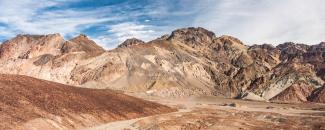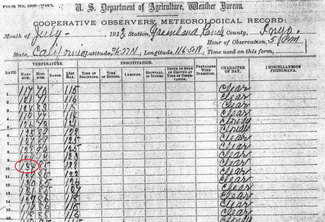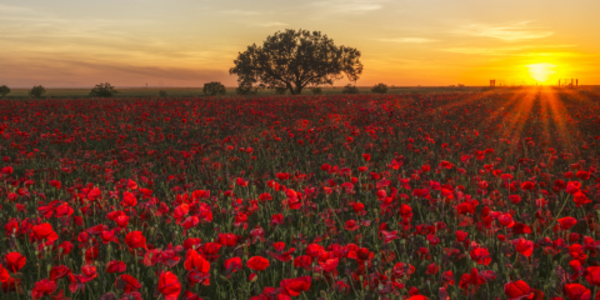
Ever since the Lost ‘49ers gave it its name back in 1849, Death Valley has been famous for being one of the hottest and driest places in North America. In fact, Death Valley holds the record for the world’s highest surface air temperature ever recorded: 134°F observed at Greenland Ranch on July 10, 1913. While 134°F is definitely well-above Death Valley’s average summer temperatures, temperatures frequently reach or exceed 100°F from mid-May until early October.
On July 5–14, 1913, Death Valley endured an intense stretch of hot weather. The high temperature reached 125°F or more every day, and that 10-day period still ranks as the longest consecutive stretch of temperatures that high in the valley. The hottest days were from July 9 to 13, when the high temperature reached as least 129°F each day. On July 10, the temperature spiked to 134°F, solidifying Death Valley’s scorching reputation.
Death Valley has had challenges to its record. On September 13, 1922, a temperature of 136°F was recorded at El Azizia, Libya. This was certified by the World Meteorological Organization as the hottest air temperature ever recorded on Earth, but additional evidence came to light indicating that the 136°F reading was invalid. On September 12, 2012, the World Meteorological Organization officially certified the 134°F reading at Death Valley as the all-time highest surface air temperature recorded on the planet.
Why Is Death Valley So Hot?
The depth and shape of the valley itself influence summer temperatures and largely contribute to Death Valley’s extreme heat. The valley is a long, narrow basin 282 feet below sea level, surrounded by high, steep mountain ranges. The clear, dry air and sparse plant cover allow sunlight to heat the desert surface. The heat radiates back from the rocks and soil, and then becomes trapped in the valley’s depths. Summer nights provide little relief as overnight lows during the season may only dip into the 85°F to 95°F range.




